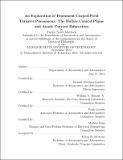| dc.contributor.advisor | Manuel Martinez-Sanchez. | en_US |
| dc.contributor.author | Matlock, Taylor Scott | en_US |
| dc.contributor.other | Massachusetts Institute of Technology. Dept. of Aeronautics and Astronautics. | en_US |
| dc.date.accessioned | 2013-02-15T14:38:06Z | |
| dc.date.available | 2013-02-15T14:38:06Z | |
| dc.date.copyright | 2012 | en_US |
| dc.date.issued | 2012 | en_US |
| dc.identifier.uri | http://hdl.handle.net/1721.1/77097 | |
| dc.description | Thesis (Ph. D.)--Massachusetts Institute of Technology, Dept. of Aeronautics and Astronautics, 2012. | en_US |
| dc.description | Cataloged from department-submitted PDF version of thesis. This electronic version was submitted and approved by the author's academic department as part of an electronic thesis pilot project. The certified thesis is available in the Institute Archives and Special Collections. | en_US |
| dc.description | Includes bibliographical references (p. 325-343). | en_US |
| dc.description.abstract | A low power plasma thruster, initially dubbed the Diverging Cusped-Field Hall Thruster, was built at MIT in 2007 with the aim of providing an alternative to comparably sized conventional Hall thrusters able to provide enhanced lifetimes and thus deliver higher total impulses. The initial design was constrained in some respects by availability and inexpensiveness of materials rather than on experience based optimization due in part to the dearth of literature available for similar devices. While experiments suggest that the prototype Diverging Cusped-Field Thruster performs as well as mature Hall thruster designs, they have also revealed several operational quirks which could potentially pose problems for spacecraft integration. Dominant among these peculiarities are the existence of at least two distinct operational modes, marked by a steep jump in anode current and current oscillation amplitude, and, somewhat separately, the coalescence of the ion plume into a hollow cone-like structure with peak fluxes around 30 degrees from the thruster axis. This thesis describes the experimental and numerical work undertaken in an attempt to uncover the physical underpinnings of these two prominent cusped-field thruster phenomena. Stratification of the plasma plume into a wide-angle conical shell represents both a loss in thrust efficiency and a potential hazard for beam impingement on spacecraft surfaces. A method was envisaged to decrease the divergence of the beam using an external solenoid to re-contour the magnetic field near the thruster exit, where measurements suggest the critical ion acceleration occurs. Implementation of this method demonstrated clear vectoring of a large portion of the ion beam towards smaller angles in line with hypothesized effects, however a distinct, low-density, outer shell remained at the initial angle of divergence. Separately, the observed bifurcation in operational mode at normal conditions represents both a physically interesting display of plasma dynamics in the thruster discharge chamber and a potentially highly problematic feature, as operational envelopes in a particular mode have been observed to change unpredictably with experimental conditions. Attempts are made to experimentally isolate the factors which lead to bifurcation. The steady-state characteristics of the two modes are investigated using infrared thermography to monitor chamber temperatures while the unsteady behavior is monitored with an AC current probe on the discharge power supply. A thermal model of the thruster, using commercial finite-element-analysis software, is developed to validate plasma power deposition estimates from the thermography experiments. A prominent feature of the bifurcation is observed in the anode current spectrum, which changes from a quiescent mode to one exhibiting a strong relaxation oscillation at a fundamental frequency of several kilohertz. The nature of the oscillatory mode, and its transition to a highly damped state, is investigated through parametric scans of the thruster operating conditions. The main oscillation appears, from experiment, to be a breathing mode similar to those observed in Hall thrusters. An unsteady 1-D fluid code is adapted from the Hall thruster literature to model the interaction of neutral gas flow with the magnetically-limited electron current believed to be the main source of the instability. Trends in stability of the breathing mode with both thruster and model parameters, such as propellant flow rate, anode voltage, magnetic field, electron mobility and discharge chamber divergence are examined. A turbulent shear model is introduced to capture the effects of a time-evolving cross-field electron mobility on mode transitions and is shown to reproduce the experimentally observed oscillation damping at high voltages if the eddy turnover times are allowed to increase by modest intervals. The shear model is also able to naturally reproduce a feature of the anode current waveform, where a series of possible ionization avalanche events are muted before eventually leading to a large burst in current, which has not been captured by prior models. | en_US |
| dc.description.statementofresponsibility | by Taylor Scott Matlock. | en_US |
| dc.format.extent | 343 p. | en_US |
| dc.language.iso | eng | en_US |
| dc.publisher | Massachusetts Institute of Technology | en_US |
| dc.rights | M.I.T. theses are protected by
copyright. They may be viewed from this source for any purpose, but
reproduction or distribution in any format is prohibited without written
permission. See provided URL for inquiries about permission. | en_US |
| dc.rights.uri | http://dspace.mit.edu/handle/1721.1/7582 | en_US |
| dc.subject | Aeronautics and Astronautics. | en_US |
| dc.title | An exploration of prominent cusped-field thruster phenomena : the hollow conical plume and anode current bifurcation | en_US |
| dc.title.alternative | exploration of prominent cusped-field thruster phenomena : control of the hollow conical plume and an anode current bifurcation | en_US |
| dc.type | Thesis | en_US |
| dc.description.degree | Ph.D. | en_US |
| dc.contributor.department | Massachusetts Institute of Technology. Department of Aeronautics and Astronautics | |
| dc.identifier.oclc | 824777167 | en_US |
